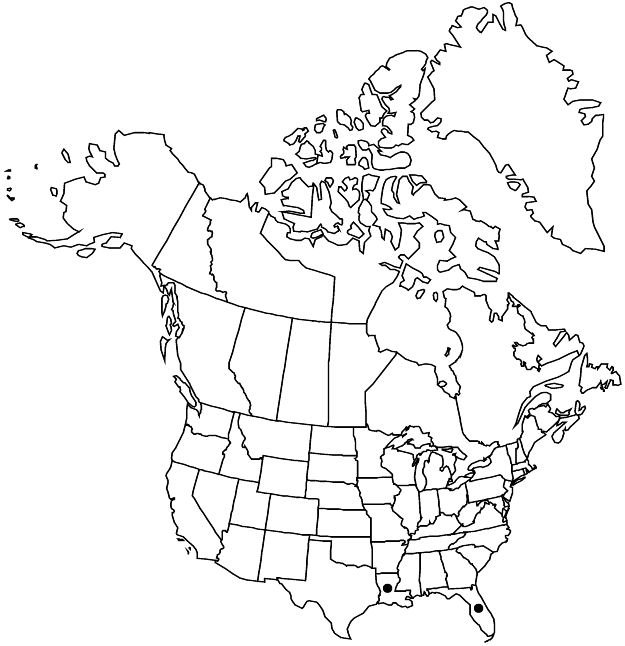Oxalis triangularis
Fl. Bras. Merid. 1(qto.): 128. 1825.
Herbs perennial, acaulous, rhizomes present, branching, short, 1 cm diam., densely scaly, stolons absent, bulblets sometimes present, clustered; bulb scales (1–)3-nerved, margins glandular. Leaves basal, rarely absent at flowering; petiole 12–20 cm; leaflets 3, dark purple, commonly with lighter violet splotches radiating from midvein adaxially, obtriangular to obovate-triangular, (20–)30–50(–60) mm, lobed 1/10 length or apex merely notched, lobes apically truncate to slightly convex, surfaces glabrous, oxalate deposits absent or in short, marginal lines on both sides of notch. Inflorescences umbelliform cymes, (1–)2–5(–9)-flowered; scapes 15–35 cm, glabrous. Flowers heterostylous; sepal apices with 2 orange tubercles; petals white to pinkish or pale purple, 15–22 mm. Capsules ovoid-ellipsoid, 12–18 mm, glabrous.
Phenology: Flowering Apr–May.
Habitat: Disturbed sites, near gardens.
Elevation: 0–100 m.
Distribution

Introduced; Fla., La., South America (Argentina, Bolivia, Brazil, Paraguay, Peru).
Discussion
In East Feliciana Parish, Louisiana, north of Baton Rouge, Oxalis triangularis has spread from a planter pot into adjacent woods (G. F. Guala, pers. comm.). In Leon County, Florida, a population is growing and slowly spreading at the edge of a woodland remnant within the city of Tallahassee (L. C. Anderson, pers. comm.).
A. Lourteig (2000) recognized two subspecies sympatric over much of their native ranges (as cited, subsp. triangularis in Argentina, Bolivia, Brazil, and Paraguay, subsp. papilionacea in Bolivia, Brazil, Paraguay, and Peru) and differing by the following contrasts: subsp. triangularis has sepals acute, oxalate tubercles small or absent, and petals white to purplish, three to four times longer than the sepals; subsp. papilionacea has sepals obtuse to subacute with oxalate tubercles thickened, and petals pink to purplish, rarely white, about two to two and a half times longer than the sepals. With these subtle differences and broad sympatry, it seems probable that only a single evolutionary entity exists. In any case, the few North American collections studied here would be Oxalis triangularis in the strict sense. Forms of O. triangularis are sometimes recognized as “atropurpurea” but apparently this is a horticultural name.
Selected References
None.